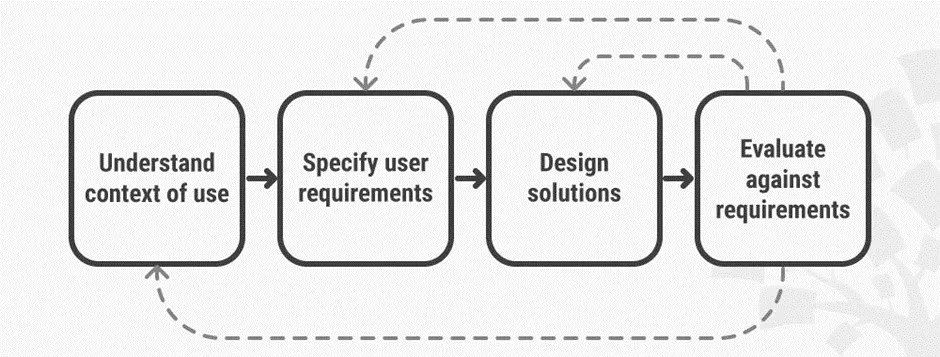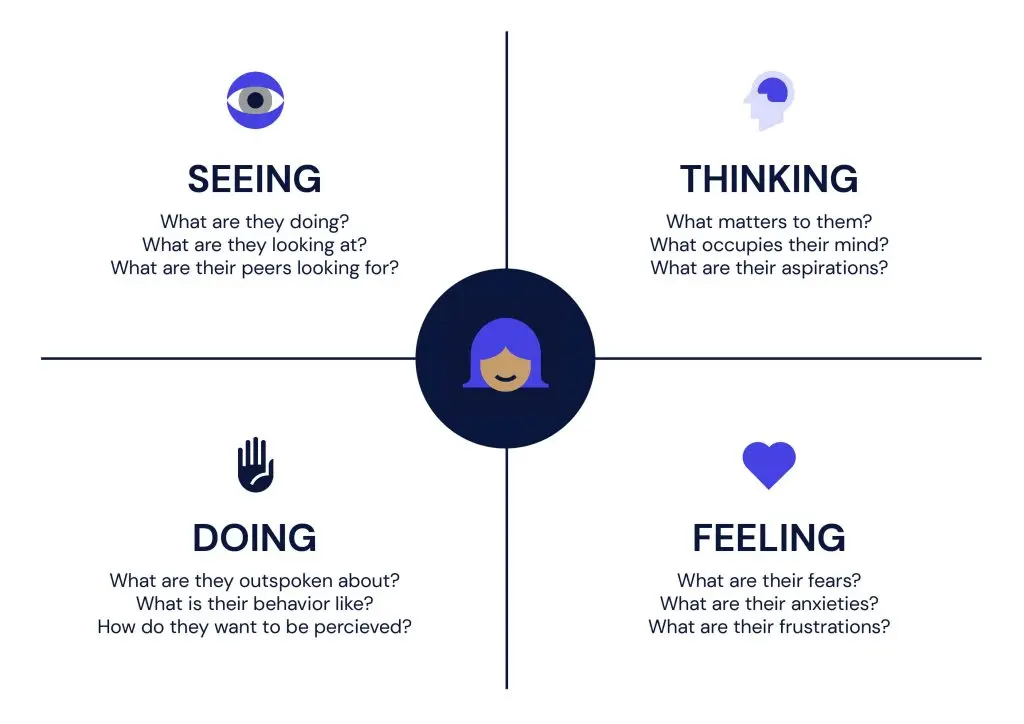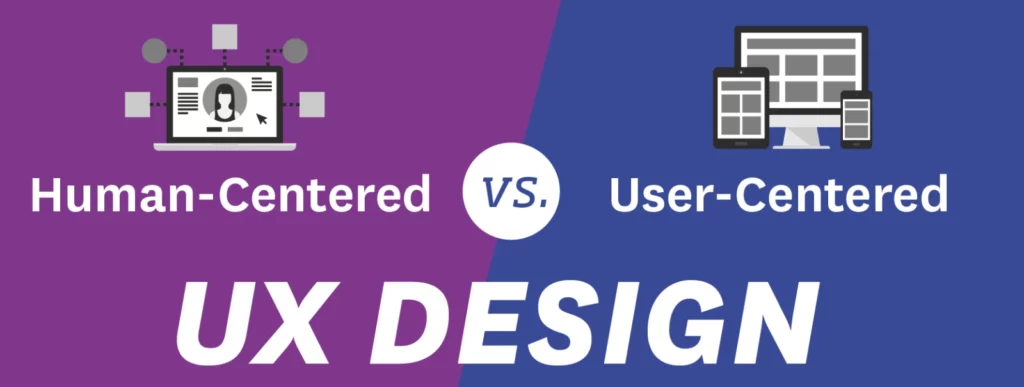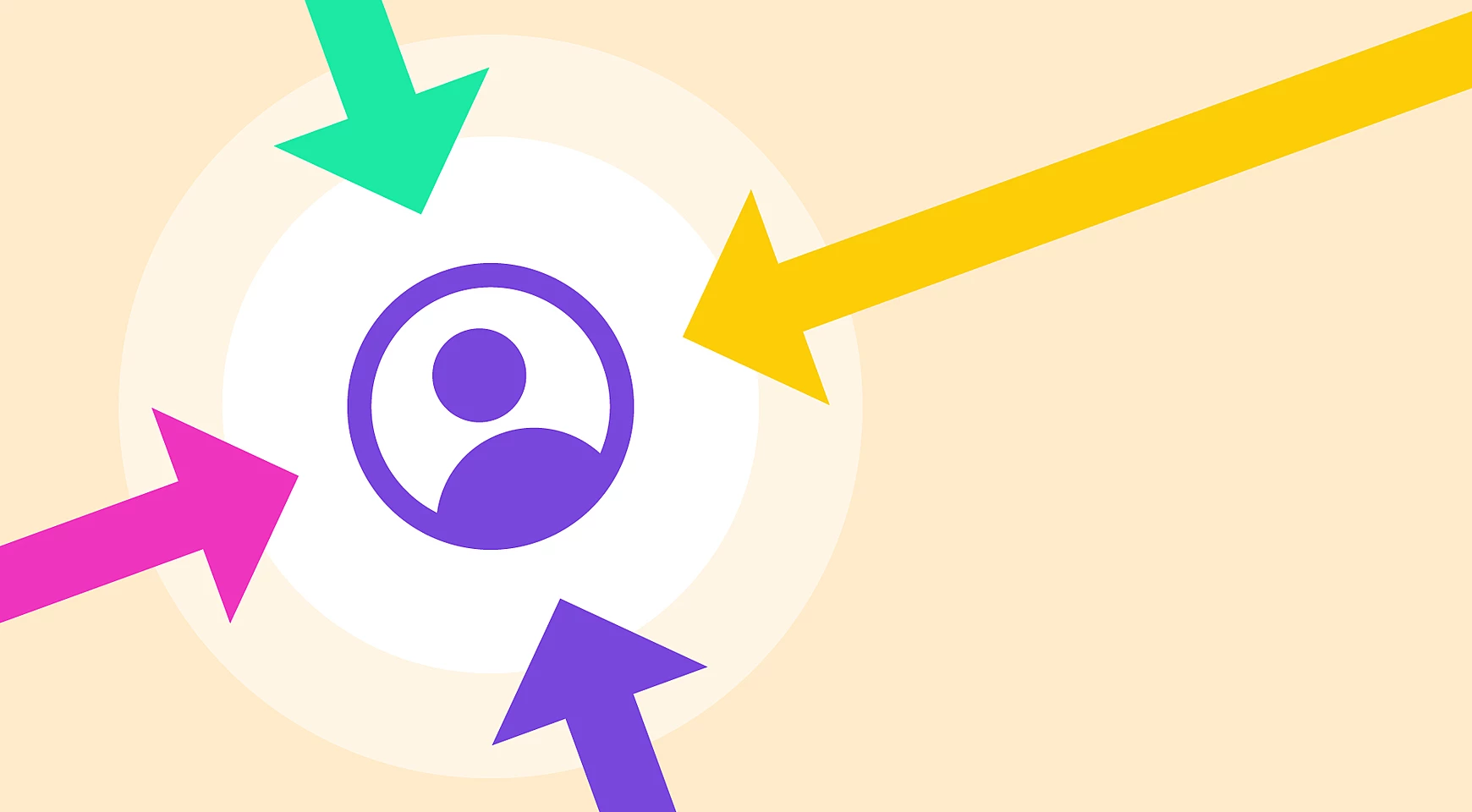More and more companies are focusing on human-centred innovation in their design and development decisions. Rather than rushing products to market, these companies are adopting a user-centred design approach.
Through this approach, design and development teams create digital products or websites that perform well and meet customers’ needs by prioritising the user experience. This not only boosts the reputation of the business but also improves the overall user experience.
It’s common to find principles in the world of UX design, as the Interactive Design Foundation agrees, referring to them as “widely applicable laws, guidelines, biases and design considerations” to guide designers.
In this post, we will define user-centred design, explore its core principles, and outline the process for implementing a user-centred design approach.
What Is User-Centred Design?
User-centred design is a set of design processes that focus on the needs of the user at every step to create an enjoyable solution to a problem. Design decisions are greatly influenced by the expectations, objectives, and preferences of the user in UCD.

Moreover, users are actively engaged throughout the entire process, from beginning to end. User-centred design principles urge designers to develop products collaboratively with users, rather than just creating them for them. This approach typically involves activities such as user research, interviews, usability testing, and gathering a considerable amount of feedback.
User-centred design (UCD) involves four essential components that must be considered:
- Visibility: When a user lands on your website, is it immediately clear what it is about and how to use it?
- Availability: Is your website user-friendly? Can users quickly find the information they need, including call-to-action buttons, menus, filters, and search options?
- Legibility: Is the text on your website easy to read for users?
- Language: Is the language used in your UX content easy for users to understand? Do you avoid using industry jargon that could cause confusion and uncertainty?
What Is The Importance Of UCD?
The importance of User-Centred Design (UCD) lies in its ability to improve user experience in product design, particularly in digital products such as app design, web and interface design, and marketing.
Consumers desire products that simplify their lives, and the success of a website, app, or product is largely determined by their interaction with it. Therefore, prioritising UCD in the design process can lead to more satisfied customers, increased engagement, and ultimately, greater success for the product.

Implementing a user-centred design strategy can offer several benefits for businesses, such as:
- Increased customer loyalty, leading to repeat business
- Higher sales due to improved customer satisfaction
- Creation of polished, efficient, and widely available products
- A better understanding of customer challenges, leading to suitable solutions
- Collaboration between customers and teams throughout the design process
- Avoidance of common mistakes
- Increased competitiveness in the market
- Assistance in understanding their target market better.
The benefits of user-centred design for consumers are as follows:
- Simplifying their lives by creating products that are easy to use and understand
- Fulfilling their desires and needs by providing products that meet their expectations
- Making them feel heard and understood by companies during the design process
- Making them feel important by involving them in the creation of products they use
- Providing solutions to challenges they may not have been aware of or could not imagine solutions for.
To learn more about the advantages of User-Centred Design (UCD), let’s take a closer look.
By adopting a UCD approach in web development, businesses can benefit in several ways.
Here are the five main advantages:
1. Avoiding Project Failure
Continuous feedback is crucial to assess how customers react to a product, such as a website. Incorporating user feedback makes it easier to incorporate improvements and ensure the product aligns with actual user needs. This leads to customers feeling like their needs are better represented in the final product, which can increase engagement and strengthen the bond with the company.
2. Improving ROI
UCD produces products that more accurately reflect user expectations, which leads to fewer mistakes made by website users. These factors motivate users to convert from leads to paying clients, boosting return on investment.
3. Increasing Development Efficiency
In UCD, the objectives of the various team members are aligned. This helps clarify the best course of action for all parties involved. The regular evaluation process encourages a more targeted, goal-oriented development process. Businesses can also engage stakeholders and explain how their efforts and methodologies will improve customer interactions by using an iterative life cycle during product development.
4. Enhancing Competitiveness
When a product is created with the needs and expectations of customers in mind, they will more fully appreciate what the business offers, improve their engagement with the product or website, and be more likely to purchase from the business. This may increase the business’s ability to compete in the industry.
5. Including KPIs
Knowing what user needs are essential for overall business goals allows businesses to measure key performance indicators accordingly. For example, productivity may be the focus of office software, shopper activity may be the focus of sales tools, and retention rates may be the focus of other apps. All of these are necessary steps toward achieving business values such as profit and revenue.
Human-Centred Design Vs User-Centred Design
There is a notable distinction between human-centred design and user-centred design. While all users are humans, not all humans will use your product. Therefore, it is important to have a comprehensive understanding of your target market to develop a successful user-centred design.
Conducting extensive research on the problems and objectives of your users is necessary. It is also important to communicate with them and offer several opportunities to provide feedback. This process will enable you to create a complete user persona that can guide your design priorities.

It is critical to recognise that different user groups may have varying requirements, levels of technical expertise, and expectations for using products similar to the one you have created.
Designers must consider important guidelines and principles when implementing a user-centric design approach.
The Process Of User-Centred Design
The process of User-Centred Design involves fundamental principles, but there are no specific methods for implementation, as the development process is iterative and can be used in both waterfall and agile environments. Here are the steps involved:
1. Contextualisation
The first step is to analyse the environment in which users will use the product. What are the intended applications of the product for future users? Teams working on projects can get answers by watching and talking to potential users.
2. Specifying Requirements
The second step is to outline the requirements for the new product while considering both user and corporate needs.
3. Design
Once the requirements are established, the actual design process can begin. Designers typically start by producing a simple prototype, such as one made of paper, before moving on to digital wireframes and a finished prototype.
4. Analysis
After creating a prototype, the project team solicits feedback from potential users. This is typically done through in-depth user testing and qualitative research to evaluate user satisfaction, effectiveness, and efficiency. With the new information, the project team goes back to step 2 or step 3 of the design process to improve the product. These iterations continue until user feedback is satisfied, while taking into account corporate frameworks such as time and costs.

Top 10 User-Centred Design Principles
The principles of user-centred design aim to prioritise usability throughout the development process. By adhering to these principles, designers can ensure that the user experience is not only fulfilled during the initial product introduction, but also during its usage. Moreover, each principle can be customised to fit the specific requirements and interaction demands of any product. Here are the top 10 principles of user-centred design:
1. Use Simple Language
Professional web designers should use the most readable language for users when creating a product. This involves clarifying vocabulary, eliminating jargon, and providing only relevant information to the user. Presenting users with irrelevant information can detract from the product’s usefulness. Simple language also helps users complete tasks without feeling overwhelmed or confused.
2. Provide Feedback
Users expect feedback for every action they take. This may involve changing the appearance of the screen after completing a task, or displaying a loading page if a task takes some time to complete. Keeping the user informed throughout the process reassures them and helps them stay on track with their task.
3. Maintain Consistency
Maintaining consistency is essential in ensuring an ideal user experience. Consistency affects how users approach a product and the time it takes to learn how to use it. From the beginning of the project to its completion, the consistent philosophy underpinning the UCD process should be maintained. If the interface design needs to be updated, it is critical to maintain consistency across new features to stay beneficial to the user.
4. Give Users Complete Control
Users know what they need, so they should be able to use a product with minimal effort and rely on the product’s help to accomplish the rest. By removing effort from the task, users can complete it quickly while still maintaining control over their activities.
5. Understand the User’s Situation
Before developing a product, designers must investigate the ideal user and their needs. By studying their lifestyles, designers can gain a comprehensive sense of some of the issues these people experience. Many of these observations are conducted through interviews, which provide designers with information on the exact goals that users want to achieve and how they want to achieve them.
6. Test the Design
At this stage in the UCD process, designers undertake usability testing with actual users of their product. This stage provides insight into how users will interact with the product and how to modify it to better suit their needs. It is recommended that this stage be completed as quickly as possible, so designers can comprehend their product from the user’s perspective.
7. Create Designs That Meet User Needs
The design team must examine the unique features of their intended demographic and frequent real-world activities while beginning the design process. The product should also be appropriate for the environment in which it will be used the most. Creating a product that requires a lot of work from the user reduces its usability and usefulness, ultimately defeating the purpose of UCD.
8. Iterate the Design Process
Since user-centred design prioritises the user, the product team should constantly work to improve the user experience. By introducing changes gradually, designers will gain a better understanding of their target audience.
9. Provide Adequate Navigation Tools
An essential component of the user experience is the ability to navigate between pages of a website and return to the previous page. Users should know where they are on the website and how to leave any pages they don’t want to see. Features like a navigation map can help users better understand how to navigate a website. Users should also be able to change their order without leaving the current page if they need to.
10. Create a Flawless System
Users should be able to accomplish their goals quickly and easily. If they make a mistake, provide them with help to correct it and achieve their objective. Use gentle reminders or alerts to guide users in completing essential fields or responding to prompts.
Wrapping Up
User-centred design is not just about creating a good product; it goes beyond that. By putting your users at the forefront, you are showcasing your intentions and motivations. It’s not just about meeting deadlines or making a profit; it’s about prioritising the needs of your users and showing them that you understand their wants.
It’s no surprise that the most successful teams are those that adopt a user-centric approach. Understanding your customers is crucial to success in any industry, especially in design. When you prioritise the needs of your users, you create products that people will love.
Incorporating the User Centred Design process into your product design can help you build a more robust, user-friendly website that can better meet the needs and expectations of your users. However, it’s important to work with a specialist who can apply these techniques and help you achieve the desired results.

